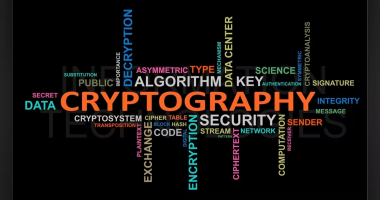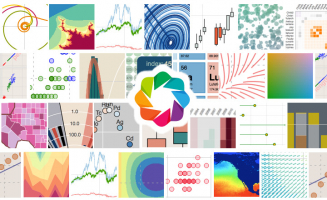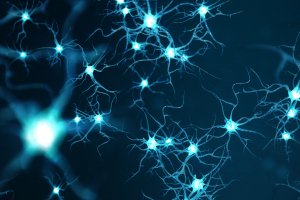Top 8 Best Online ArcGIS Courses
Geographic Information Systems Analysis is the analysis of spatial relationships and patterns. Spatial components are being ingrained into society with the ... read more...advent of the Internet of Things (IoT) in which more data can be connected and is likely to have a spatio-temporal component as well. These are the top 8 Best Online ArcGIS Courses let's find out
-
Users using ArcGIS for basic geospatial data/GIS/Remote Sensing analysis will learn how to do more complex geospatial analysis jobs, such as object-based image analysis utilizing a range of different data and employing cutting-edge Machine Learning techniques. You will gain expertise in spatial data analysis using ArcGIS, as well as the powerful chance to learn how to utilize ArcGIS for sophisticated satellite-based image analysis for the most important work in remote sensing, namely mapping land use and land cover.
That you found my LULC Advanced course makes me extremely happy. One of the key competencies for any Geographic Information Systems (GIS) and Remote Sensing analyst is practical understanding of advanced Land Use and Land Cover (LULC) mapping, which is what this course aims to provide you. By the conclusion of the course, you will have a firm grasp of advanced geospatial analysis, be able to execute machine learning techniques for mapping land use and land cover, and comprehend the fundamentals of segmentation and object-based image analysis. You may perform all of these tasks using actual data and ArcGIS, one of the most well-liked GIS programs.
In contrast to other training materials, this course is unique. Each lecture aims to improve your GIS and Remote Sensing abilities in a clear, simple-to-understand manner and provide you answers that you can immediately put into practice. With your advanced GIS abilities and understanding of the most cutting-edge LULC methodologies, you'll be ready to begin analyzing spatial data for your own projects and wow potential employers. You will be able to complete all phases of LULC mapping in the course, from gathering satellite data to evaluating the correctness of your Remote Sensing map and designing a stunning change map that is ready to be integrated into your document or report.
The course is perfect for professionals who need to utilize LULC maps in their line of work and would like to master the basics of LULC and change detection in GIS. These professionals include geographers, programmers, social scientists, geologists, GIS and Remote Sensing specialists, among others. The Machine Learning in ArcGIS : Map Land Use Land Cover in GIS, one of the best online ArcGIS courses, will offer you the assurance you need to comprehend and resolve such geospatial problems if you want to embark on a work that necessitates the use of cutting-edge classification algorithms for producing, for example, land cover and land use maps.
The practical exercises are one of the course's key components. To generate LULC maps and modify maps using the ArcGIS program, you will be provided with specific instructions, codes, and datasets. They have included downloadable instructional resources in this course that will instruct you in:
- Develop your ArcGIS expertise
- Recognize the fundamentals of machine learning, including the supervised and unsupervised Machine Learning Algorithms, which are used in GIS.
- Gain knowledge of the many machine learning methods available in ArcGIS for classifying satellite and UAV pictures.
- Acquire knowledge about how to carry out validation data collecting, training, and accuracy assessment.
- Acquire knowledge of object-based image analysis.
- Use ArcGIS to segment images.
WHAT YOU WILL LEARN:
- Fully understand advanced GIS and Remote Sensing methods of Land use and Land Cover (LULC) Mapping in ArcGIS
- Learn how to perform such advanced GIS methods as object based image analysis (OBIA) and object-based classification using real-world data
- Further advanced your GIS and Remote Sensing skills in the market leading GIS software (i.e. ArcGIS)
- Learn how to obtain satellite data and UAV images, create training and validation data for OBIA and pixel-based and Remote Sensing data classification
- Learn about Machine Learning and Machine Learning types / algorithms
- Apply all stages of supervised Machine Learning in ArcGIS
- Apply advanced Machine Learning image classification algorithms in ArcGIS
- Explore the power of ArcGIS for Remote Sensing image analysis
- You'll also have plenty of handy hints and tips will be provided alongside the code to prevent glitches
- You'll have a copy of the data and some detailed manuals used in the course for your reference to use in your GIS analysis
- Learn applied Remote Sensing & GIS skills needed for your future / current geospatial job!
Rating: 4.7/5
Enroll here: udemy.com/course/machine-learning-in-arcgis-map-land-use-land-cover-in-gis/
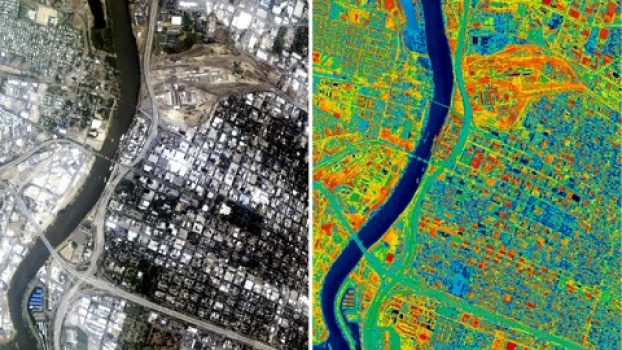
coursecouponclub.com 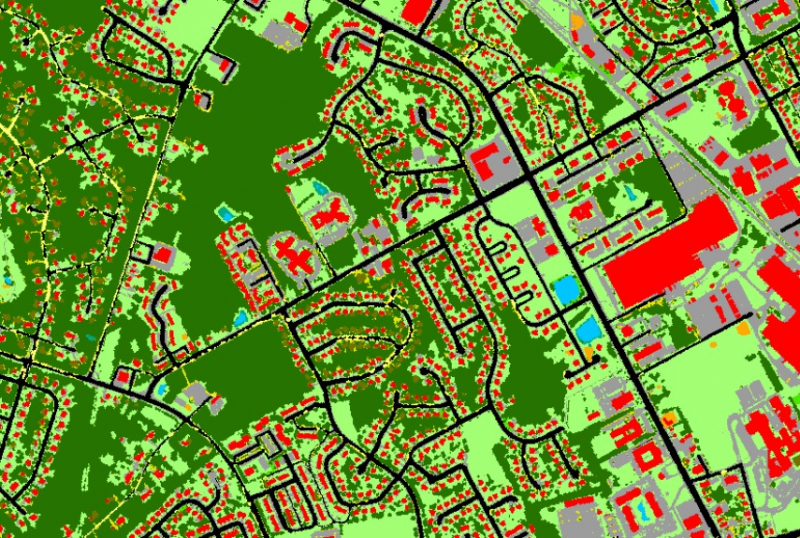
developers.arcgis.com -
The primary desktop GIS software from Esri, ArcGIS Pro, was initially made available in 2015. ArcGIS Pro versions 2.6 and 2.7 were used to record this course. It is intended for both ArcGIS Pro newcomers and those who just want to learn more about using ArcGIS Pro layouts to create maps and map series. It will be advantageous to have taken Exploring Spatial Information with ArcGIS Pro, its sister course, before taking this one. These two companion courses' topics may touch on but not go in-depth with subjects including editing spatial data and geoprocessing with tools, models, tasks, and the Python ArcPy module. For ArcPy, a third full-length companion course, ArcPy for Python Developers Using ArcGIS Pro, is currently online, and companion courses for the remaining topics are in the works.
This course's many components can be taken in any sequence. You only need to download the data and make sure ArcGIS Pro is up and running. To complete all exercises in the course, you simply need a Basic level license of ArcGIS Desktop (which includes ArcGIS Pro); no extra products need to be licensed. It is possible to utilize an Advanced level license and numerous extension products for non-commercial uses (like taking this course!) if you do not already have an ArcGIS Desktop license for roughly $100-150 per year through Esri's ArcGIS for Personal Use program.
ArcGIS Pro may also be tried out for free for 21 days. The most popular ArcGIS Pro capabilities for creating maps and map series from layouts are thoroughly covered in this course. The presenter's expertise working with ArcGIS Pro for 5 years and Esri products for more than 30 years led to the cases picked to explain how each feature is used.WHAT YOU WILL LEARN:
- ArcGIS Pro
- Desktop GIS
- Making Maps
- Making Map Series (Map Books)
Rating: 4.7/5
Enroll here: udemy.com/course/making-maps-and-map-series-using-arcgis-pro-layouts/
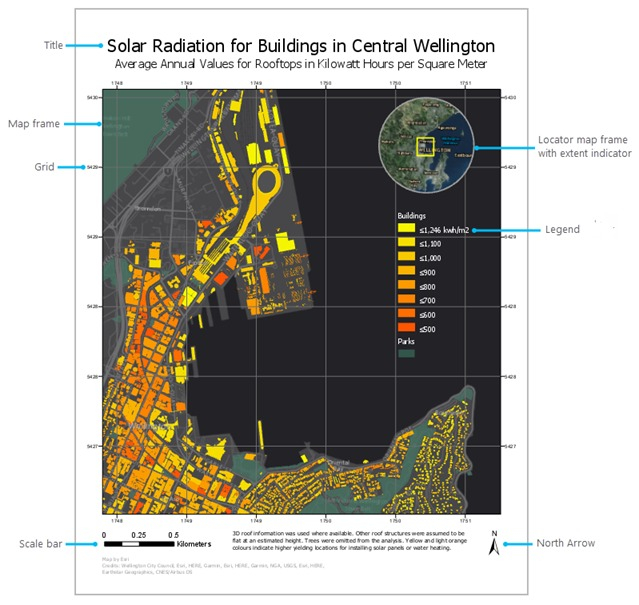
pro.arcgis.com 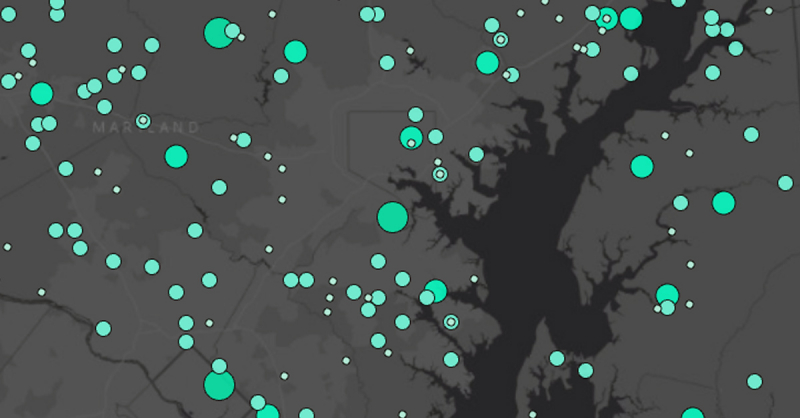
engagetu.com -
The Spatial Data Acquisition and Cartography using GIS course focuses on using ArcGIS software to create meaningful maps and visualize primary and secondary geographical data. Working with maps and geographic data is possible with ArcGIS, a geographic information system (GIS). It may be used to make and utilize maps, gather geographic data, analyze mapped data, share, and find geographic information. While secondary spatial databases are gathered from multiple organizations, primary geospatial data is mostly obtained via GPS portable devices and imported into GIS platforms. Each layer of the characteristics is labeled using a variety of symbologies. working on attribute table operations for geographic features, such as adding new fields and performing updates, removals, and joint tables, as well as calculating geometry, summarizing data, and calculating statistics for fields
The information may be obtained from scanned maps that have been georeferenced using control points and digitization of point, line, and polygon features. Similar to this, the Google Earth platform is used to extract recent databases of the earth's surface, including information on the road system, landcover, and landmarks. An improved and well-prepared map was produced after the correct compilation of all the collected data into the ArcGIS platform. The creation of the map's layout is the first step in the composing process. A map includes other features in addition to the data that combine to create a bundle of effective and understandable information.
WHAT YOU WILL LEARN:
- Learning of ArcGIS Software
- Spatial Data Acquisition
- Familiar with Google Earth
- Map Design and Cartography
Rating: 4.6/5
Enroll here: udemy.com/course/spatial-data-acquisition-and-cartography-using-gis/
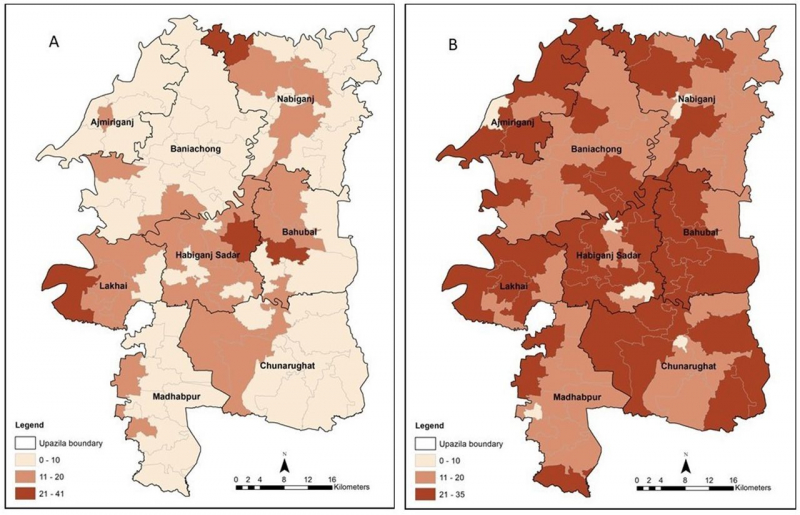
gh.bmj.com 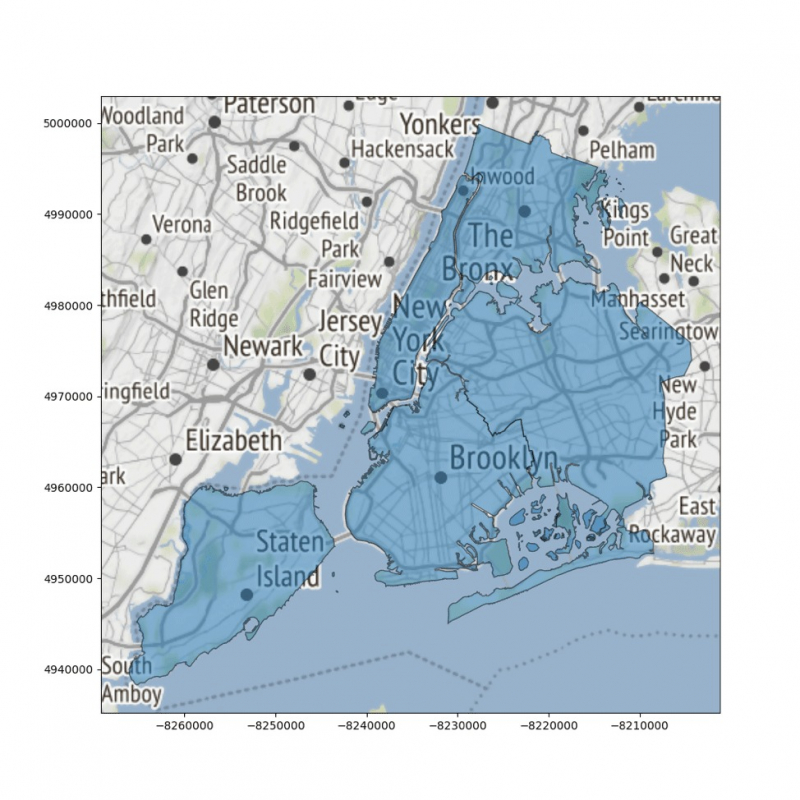
gislounge.com -
Thanks for visiting the ArcGIS Course. You may learn the fundamentals of ArcGIS in just 6 hours, after which you'll be ready to use it for a variety of tasks. They have offered materials in this course and also demonstrated how to get free resources and even create your own resources if necessary. There are ten sections in this course. You will learn how to do various activities using ArcGIS in these ten distinct but linked topics.
You will get knowledge of doing business analysis, You will learn how to create maps and do spatial analysis. Following are the 10 parts and their respective contents:
- Introduction (3 Videos)
- Basics of ArcMap (12 Videos)
- Geoprocessing (6 Videos)
- ArcCatalog (4 Videos)
- Utilizing shapefiles (9 Videos)
- Save as and export in ArcMap (1 Video)
- Making Maps (6 Videos)
- Tracing maps (3 Videos)
- ArcGIS and Google Earth (3 Videos)
- Utilizing Raster Files (12 Videos)
WHAT YOU WILL LEARN:
- ArcGIS, GIS, Spatial Analysis
- ArcMap Basics
- Geoprocessing
- Use of ArcCatalog
- MapMaking
- Map Digitization
- Basics and tasks of Shapefile
- Basics and tasks of Raster files
- Shape file creation
- Raster file creation
Rating: 4.6/5
Enroll here: udemy.com/course/arcgis-from-beginner-to-pro/
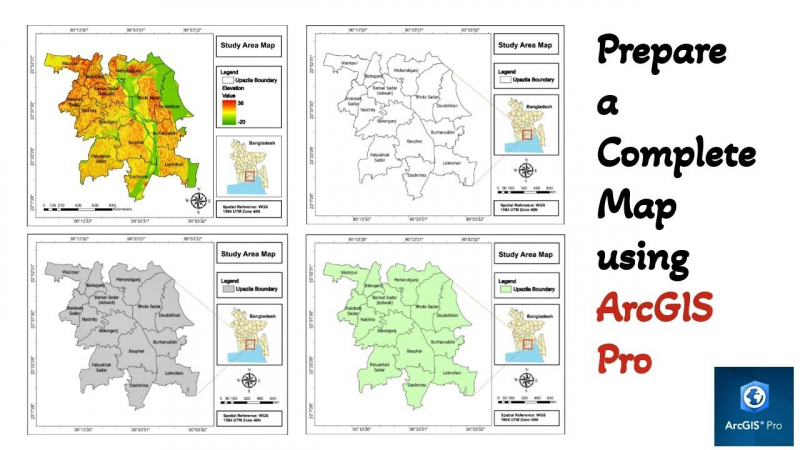
youtube.com -
You will study the fundamentals of deep learning in this course, as well as how to use deep learning algorithms (such convolution neural networks) for ArcGIS Pro. You will also get the skills you need to advance your geospatial expertise and find excellent employment possibilities. By the conclusion of the course, you will be able to utilize your own project to gather data, use deep learning algorithms to change it, and provide findings that are helpful to peers, instructors, clients, etc. Everyone who wants to learn deep learning but is unsure of where to begin with this difficult subject must take this course.
This course, one of the best online ArcGIS courses, will teach you the fundamentals of machine learning and its cutting-edge application of deep learning for geospatial analysis, namely Geographic Information Systems (GIS) and Remote Sensing. You will be comfortable and aware of the foundations of using Deep Learning methods, such as neural networks, in GIS by the end of the course. I'll show you how to use Deep Learning techniques to geographical projects like object-based picture analysis. By the end of this course, you will fully grasp the ArcGIS Pro deep learning process, be familiar with the ArcGIS deep learning frameworks, and be able to pick parameters and apply algorithms for deep learning GIS jobs. Additionally, you will get GIS experience by completing a comprehensive geospatial project while learning how to use ArcGIS Pro to explore the potential of Deep Learning for image analysis and GIS issues.
Professionals who need to utilize maps in their line of work, such as geographers, programmers, social scientists, geologists, and all other specialists, will benefit greatly from taking this course. The practical exercises are one of the course's key components. Using the ArcGIS Pro program, you will be provided with detailed instructions and datasets to apply Deep Learning algorithms.WHAT YOU WILL LEARN:
- Understand basics of deep learning as a part of machine learning
- Discover deep learning in ArcGIS Pro
- Apply deep learning algorithms, such as convolution neural networks, in GIS with ArcGIS Pro
- Learn how to install deep learning frameworks for ArcGIS
- Learn about deep learning workflow in general, and all steps in particular
- Understand different deep learning programming frameworks
- Apply deep learning in the practical real-life examples in ArcGIS Pro
- Complete your own deep learning-based project in ArcGIS Pro
- Improve your practical skills in GIS and ArcGIS
Rating: 4.4/5
Enroll here: udemy.com/course/getting-started-with-deep-learning-in-gis-and-arcgis-pro/
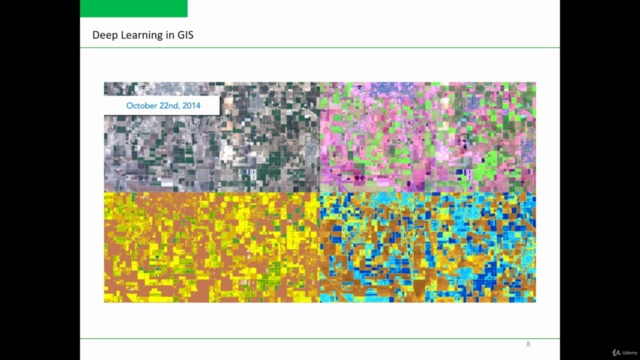
comidoc.net 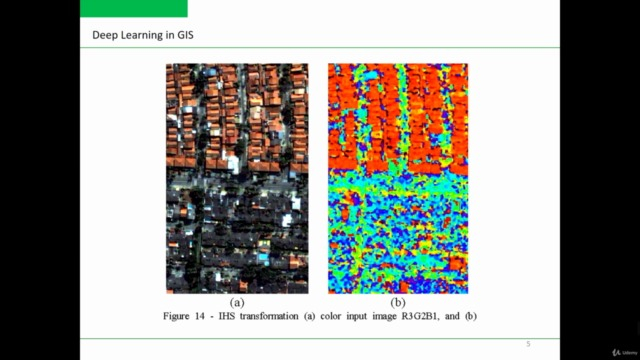
omidoc.net -
This hands-on course starts from zero and is built step by step, with real-world activities, so you can learn the principles of managing Hec-RAS. You may perform flood studies and identify flood zones using Hec-RAS, combining it with land planning and urban planning.
The Hec-RAS and ArcGIS for Hydrologic Engineering course uses the experience gained from more than 10 years of conducting such studies for administrations, private promoters, or research projects to give a detailed and straightforward description of all the steps to follow from the time they want to start a flood study until its final presentation, in contrast to other courses that only concentrate on explaining technical knowledge.
WHAT YOU WILL LEARN:
- Perform hydraulic studies of natural or artificial channels.
- Evaluate areas of flooding of rivers and streams.
- Plan the territory based on areas of flooding or hydraulic public domain.
- Perform simulations of channels or hydraulic structures.
- Incorporate the use of Geographic Information Systems (GIS) to facilitate and improve hydraulic studies.
Rating: 4.4/5
Enroll here: udemy.com/course/modeling-and-floods-with-hec-ras-arcgis/
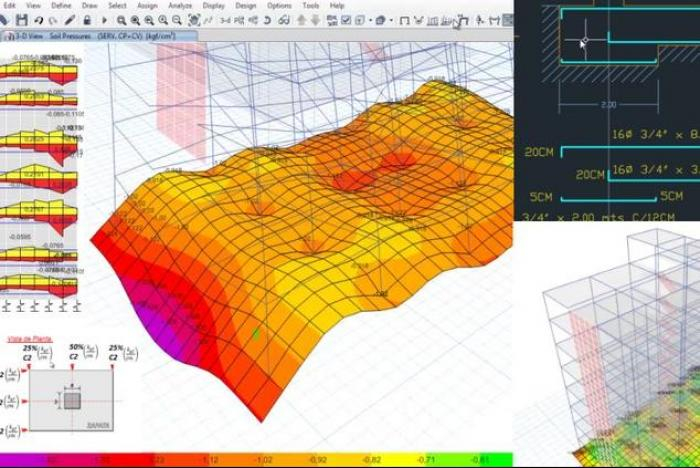
emagister.com.co 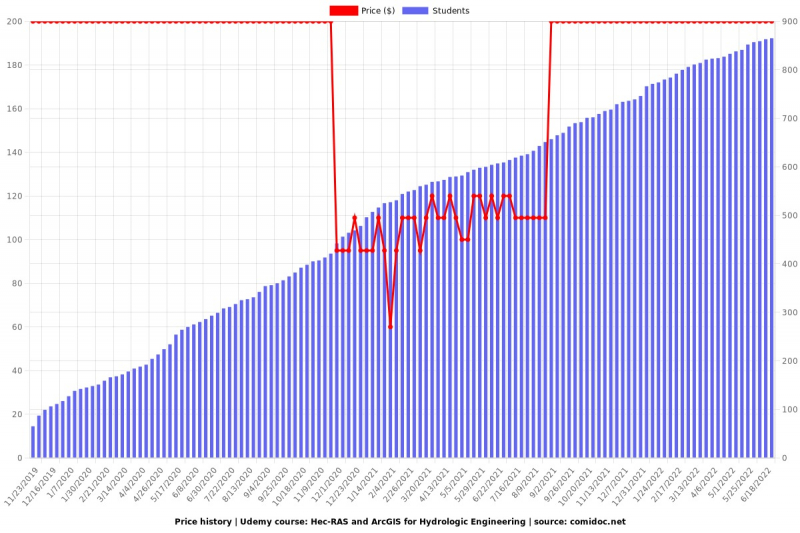
comidoc.net -
The deployment of the Geographic Information System (GIS) project requires the maintenance of several components, including data management and the creation of a precise and well-organized cartographic data base. As an information system, a SIG has four different types of resources: physical resources (computer servers and network workstations, measurement and restitution tools), software resources (SIG logic, data collection, remote detection, map and drawing tools), informational resources (various types of data), and human resources (individus, collectifs...).
Through this training, they will go into detail on the software component ArcGIS. The goal of this training is to manage the SIG project's montage stages.
WHAT YOU WILL LEARN:
- Introduction to Geographic Information System
- Presentation of the steps to design a GIS project
- Data Download Sources
- Using ArcGIS Desktop
- Set up your GIS project
- Projection systems
- Data digitization
- Answer questions using spatial information
- Layout
Rating: 4/5
Enroll here: udemy.com/course/concevoir-un-projet-sig-sur-arcgis/
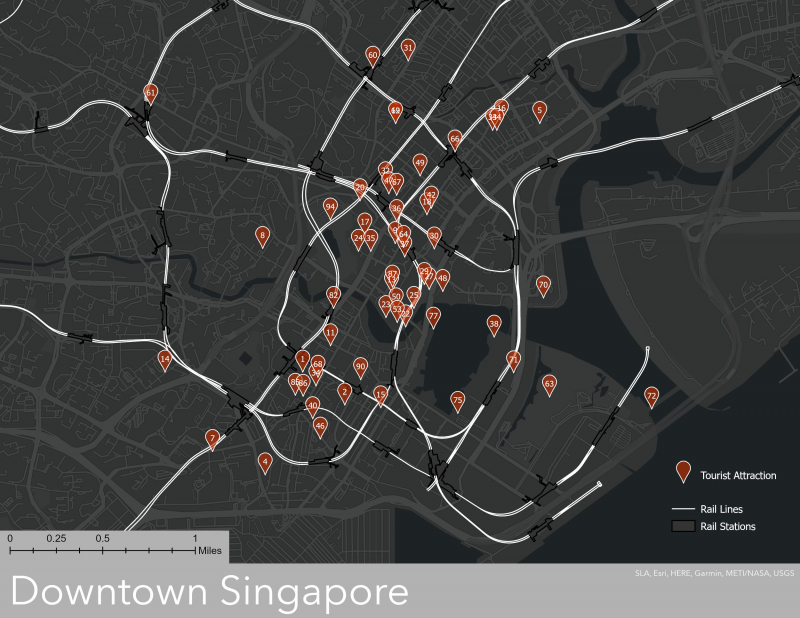
learn.arcgis.com -
Esri is the publisher of the SIG administrative software ArcGIS Desktop. This is a very comprehensive piece of software made up of several programs that enable tasks like managing data bases (ArcCatalog), analyzing and disseminating your data (ArcMap), and doing geoprocessing (ArcToolBox).
This training's main goal is to make you directly operational on a professional level, so they will cover fundamental SIG concepts, the ArcGIS user interface and parameterization, data symbolization and thematic analysis, attribution information management, data creation and updating, card restoration, and the creation of transverse basins.
WHAT YOU WILL LEARN:
- Understand the architecture of ArcGIS Desktop software
- Familiarization with GIS
- Manipulate data in ArcGIS
- Manage data symbology
- Georeference maps
- Create geographic data
- Handling Topology Errors
- Make layouts
- Creation of cartographic atlas
- Basemap management
- Perform attribute and spatial joins
- Perform geo-processing on data
- Analyze raster data
- Creation of watersheds
Rating: 4/5
Enroll here: udemy.com/course/formation-arcgis-desktop/
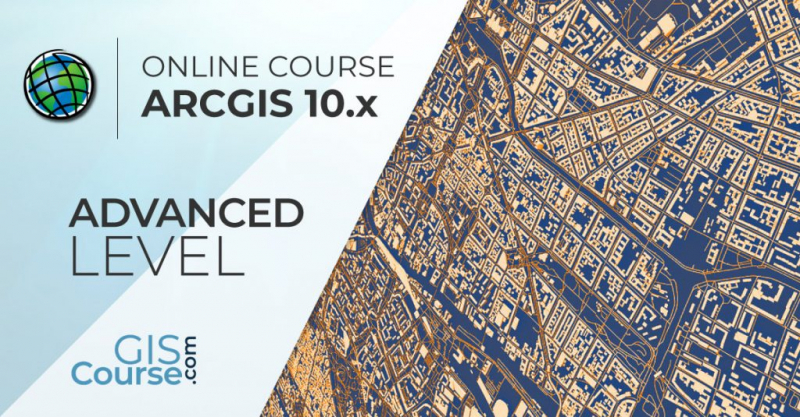
giscourse.com













